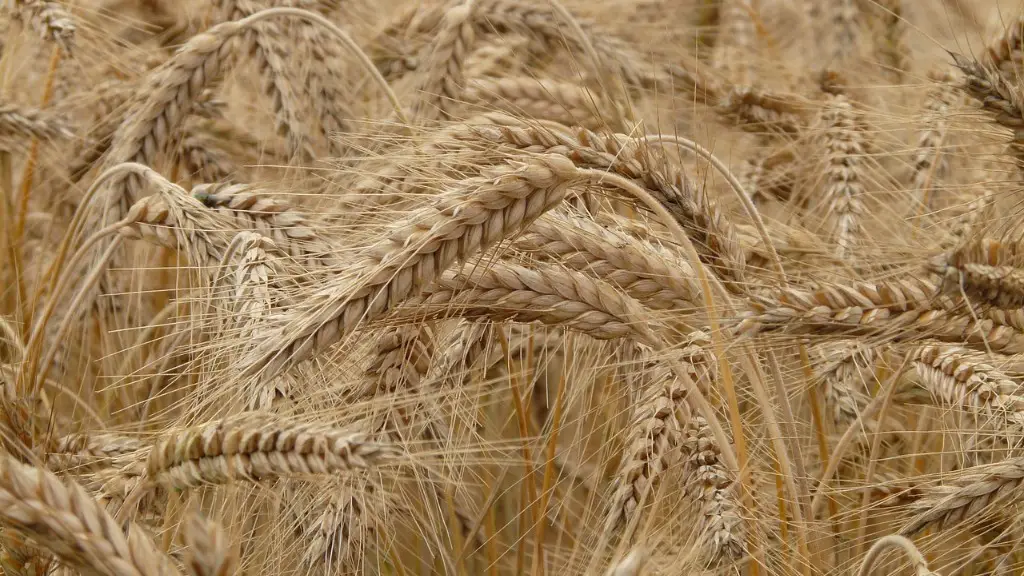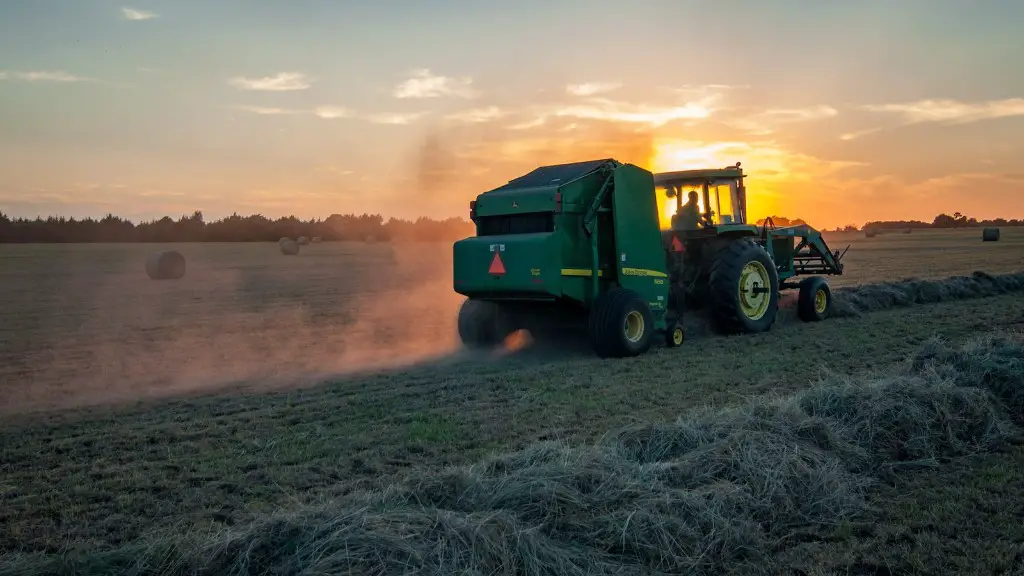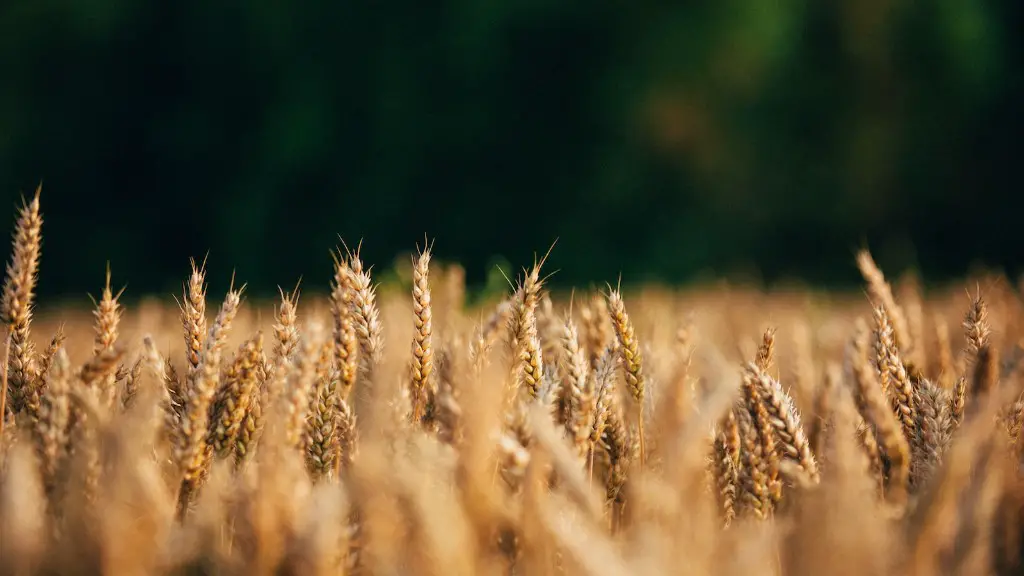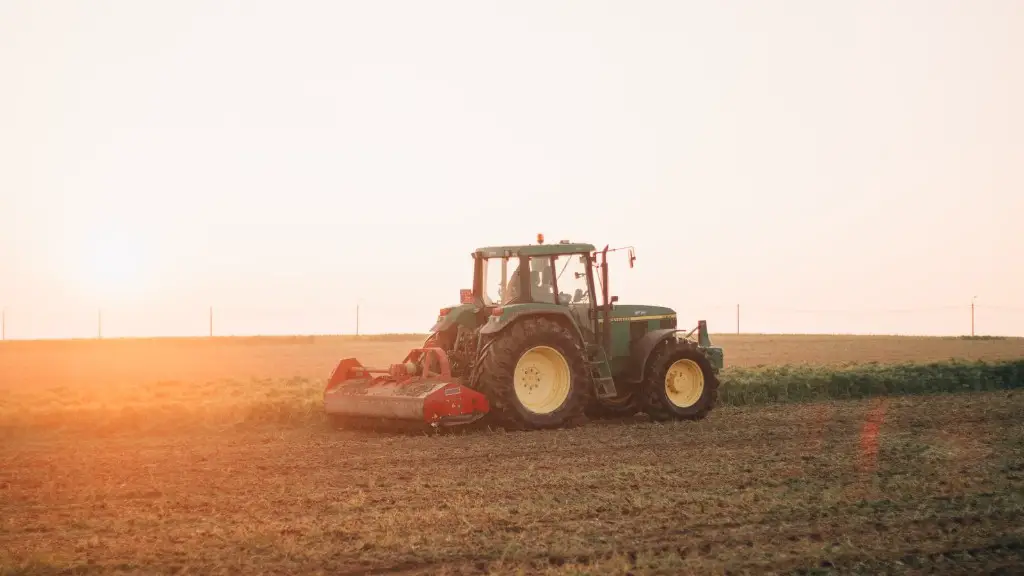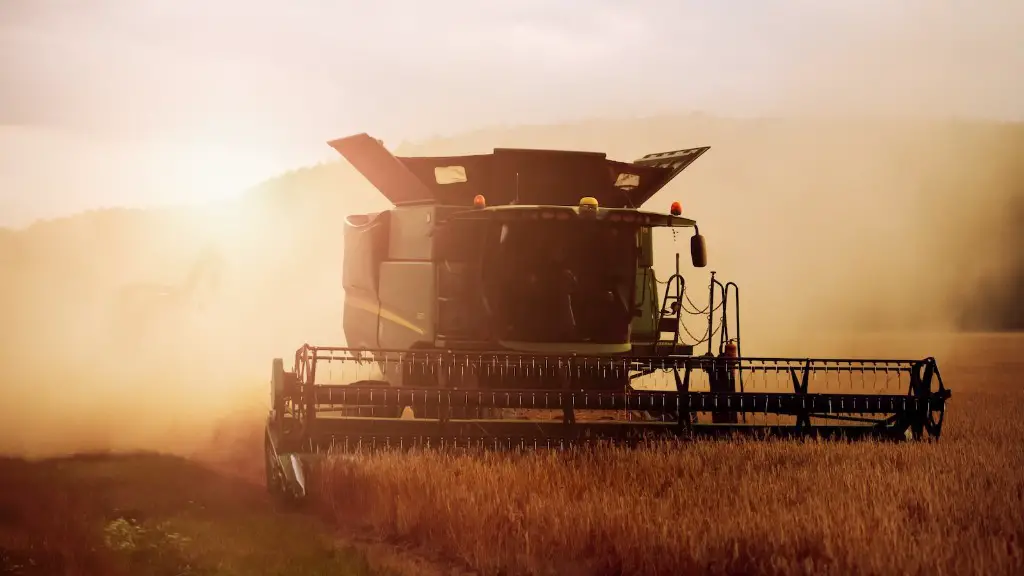The origins of agriculture date back to the Neolithic Revolution, when humans first began to cultivate the land and domesticate animals. Agriculture allowed for the domestication of plants and animals, which led to the development of civilizations. The first evidence of agriculture appears in the archaeological record around 10,000 BCE.
The first agricultural societies began to appear about 10,000 years ago. This was the time when people began to settle down in one place, instead of moving around all the time in search of food. They started growing crops and keeping animals, which they could use for food, clothing, and other things they needed.
Who first invented agriculture?
The Egyptians were among the first peoples to practice agriculture on a large scale. They began doing so in the pre-dynastic period, from the end of the Paleolithic period until the Neolithic period. This was made possible by the development of basin irrigation, which allowed them to water their crops more effectively.
The Zagros Mountain range, which lies at the border between Iran and Iraq, was home to some of the world’s earliest farmers. Sometime around 12,000 years ago, our hunter-gatherer ancestors began trying their hand at farming. They quickly realized that the Zagros Mountains were the perfect place to plant and cultivate crops. The soil was rich and fertile, and the climate was ideal for growing a variety of crops. The Zagros Mountains were also home to a large number of animals, which provided a source of food for the early farmers.
Today, the Zagros Mountains are still home to a large number of farmers. They continue to grow a variety of crops, including wheat, barley, rice, and vegetables. The Zagros Mountains are a beautiful and peaceful place, and it is easy to see why our ancestors chose it as their home.
Where was agriculture invented
The Fertile Crescent is a region in the Near East that is considered to be the birthplace of agriculture. The region includes parts of modern-day Iraq, Syria, Lebanon, Israel and Jordan. Agriculture is thought to have originated in a few small hubs around the world, but the Fertile Crescent is believed to be the first place where it truly took root. The area’s fertile soils and ample rainfall provided the perfect conditions for early farming communities to thrive. Today, the Fertile Crescent is still an important agricultural region, producing a variety of crops that are enjoyed by people all over the world.
Humans began to domesticate plants and animals for food during the Neolithic era, also known as the New Stone Age. This was a time period between 7,000 and 10,000 years ago. There were eight Neolithic crops that were domesticated: emmer wheat, einkorn wheat, peas, lentils, bitter vetch, hulled barley, chickpeas, and flax. Agriculture allowed for the growth of civilizations and the domestication of plants and animals led to the development of new technologies and ways of life.
Who was the first farmers on earth?
The study shows that the first farmers were actually a mixture of Ice Age hunter-gatherer groups, spread from the Near East all the way to south-eastern Europe. This means that the genetic origins of the first agriculturalists are much more complex than previously thought.
Lentils have been an important part of human history for over 13,000 years. They were a key part of establishing modern societies in ancient times. Today, we add lentils to stews, soups and salads to give them a boost of flavor and nutrition.
Where did humans first start farming?
However, recent discoveries have pushed that date back much further. Archaeologists have found evidence of ancient farms in the Canary Islands that date back some 32,000 years, making them the oldest known farms in the world.
The discovery was made at the site of Shillourokambos, an ancient village on the island of Grande Canaria. There, archaeologists found evidence of several types of crops, including barley, almonds, lentils, and dates.
The findings suggest that farming was being practiced much earlier than previously thought, and that it may have even played a role in the spread of human civilization.
The beginning of the Neolithic period is difficult to define because it is associated with the development of agriculture, which has different origins in different parts of the world. In general, the Neolithic period is considered to be the time when people began to domesticate plants and animals, and to live in more permanent settlements. This period is also characterized by the development of new tools and technologies, including pottery and the use of stone for construction. The Neolithic period lasted until about 3000 BC in some parts of the world, although in others it continued until much later.
How did early humans start farming
When the climate of the world was changing, people observed places where edible plants like seeds, plants, etc were found. They started growing their own plants. And thus, they become farmers.
Some historians believe that wheat was first cultivated in the Levant region of the Middle East, while others believe it originated in the Fertile Crescent region. Barley was also first cultivated in the Fertile Crescent region. Early humans likely began cultivating these crops because they were easy to grow and provided a good source of food.
Who were the first farmers in America?
Native Americans have long been known for their agricultural prowess, and this is especially true of the various tribes that inhabited the Eastern Woodlands, the Great Plains, and the American Southwest. These regions were home to some of the most fertile soils in North America, and the Native Americans took full advantage of this by cultivating a wide variety of crops.
maize, beans, and squash were the three mainstay crops of the Eastern Woodlands, and these were supplemented by a host of other vegetables, fruits, and nuts. The Great Plains were similarly rich in terms of agriculture, with the Native Americans there growing maize, beans, squash, sunflowers, and a variety of other plants. Meanwhile, in the American Southwest, the native tribes cultivated maize, beans, squash, cotton, and a host of other crops.
No matter what region they lived in, Native Americans were able to make use of the available resources to create a thriving agricultural society. This allowed them to support large populations, and to develop elaborate cultures and civilizations.
Agriculture is the process of producing food, feed, fiber and other desired products by the cultivation of certain plants and the raising of domestic animals. Agriculture was the key development in the rise of sedentary human civilization, whereby farming of domesticated species created food surpluses that allowed people to live in cities. The study of agriculture is known as agricultural science.
What is the oldest type of farming
Early agriculture is the oldest form of agriculture and is still prevalent in some parts of the world. Early forms of agriculture were based on the use of simple tools and the natural resources available in the environment. The most common early crops were wheat, barley, and rye. Early forms of agriculture were labor-intensive and required a lot of physical work.
Jonathan Dayton was one of the signers of the United States Constitution and was 26 years old at the time. He was the youngest of the Founding Fathers, and his birthplace is now part of Liberty State Park, in Jersey City, New Jersey.
What is the hardest crop to grow?
Artichokes can be a challenge for beginner gardeners because of their climate requirements and a certain pest. They require full sun and most varieties need about 100 frost-free days to mature. They’re also susceptible to aphids and whiteflies. However, gardeners who are up for the challenge can enjoy artichokes fresh from the garden.
Bread has been a staple food for centuries and is one of the oldest foods still eaten today. It is believed that bread was first made around 30,000 years ago. Bread is made from a simple dough of flour and water, and can be flavored with various herbs and spices. It is a versatile food that can be eaten alone or used as a base for other dishes.
Conclusion
The first evidence of agriculture dates back to around 10,000 BC in the Fertile Crescent region of the Middle East. Agriculture likely developed independently in different parts of the world at different times.
It is impossible to say exactly when agriculture was invented, as it likely developed independently in different parts of the world. The earliest known evidence of agriculture comes from the Fertile Crescent in the Middle East, where it was being practiced around 10,000 BCE. However, it is possible that agriculture was being practiced elsewhere much earlier.

